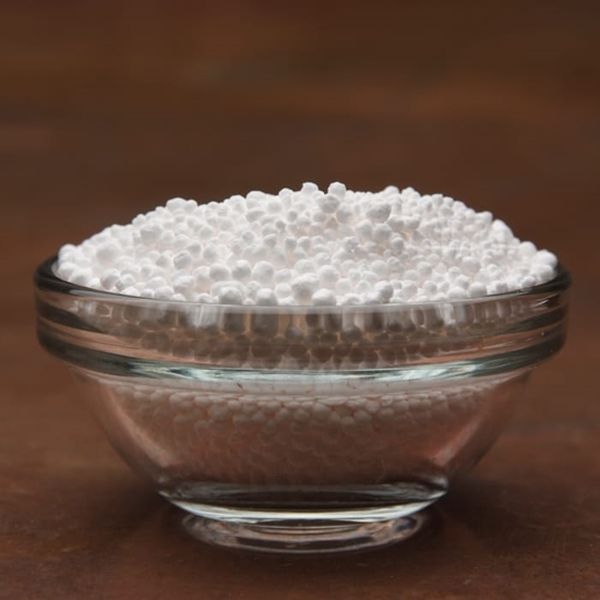Calcium chloride is a chemical compound made up of two elements, calcium and chloride. Its chemical formula is CaCl2. Calcium chloride is traditionally prepared by dissolving marble chips or limestone chips in hydrochloric acid. Although, it can be easily produced from limestone for commercial purposes, it is made from residues of the ammonia-soda process. It is essential to avoid skin contact with calcium chloride, as it can cause skin irritation.
Calcium chloride prevents spoilage of food and is popularly used as a preservative in packed foods. It also helps to keep the food healthy and fresh for a longer duration. The use of calcium chloride as a food additive and preservative has one more advantage. It helps to increase calcium content in the food, thereby contributing to boost nutritional value of the food item. In addition to being a preservative, it also acts as an excellent firming agent. Canned vegetables and fruits are likely to become soft if firming agents like calcium chloride are not added to them.
In other words, to maintain firmness and keep canned foods away from softening, use of calcium chloride is essential. Although calcium chloride does not contain sodium, it is yet salty, hence is used as a flavor enhancer for pickles. Being an electrolyte and also a source of calcium, it is not surprising that calcium chloride is also found in sports drinks. As pasteurization of milk greatly diminishes calcium content, calcium chloride is added in small amounts to aid coagulation and form quality yogurt. Calcium chloride is also an important cheese making additive. The water solution of calcium chloride is used in refrigerators. The solution is an essential cooling agent for making ice.
Calcium chloride remains in solid state at room temperature. It readily dissolves in water and ethanol at a very low temperature. As it is hygroscopic (capable of absorbing moisture), calcium chloride is always stored in air-tight (sealed) containers. Because of its strong affinity for atmospheric moisture, this chemical compound forms a liquid solution if exposed to oxygen. It can be used to dry other organic liquids; hence, it is sometimes also called a drying agent. Being strongly hygroscopic, a layer of calcium chloride is applied on roads and in mines to minimize dust problems. It is also widely used as an additive in the paper making industry and in the manufacturing of dyes. Calcium chloride is also often used as a dehydrating agent in the petrochemical industry, due to its ability to deprive a chemical compound of its water content.
Calcium chloride helps in lowering the freezing or melting point of water. Ice covered roads is a common problem in cold regions of the world. To make these roads usable, melting this ice is very important. Its ability to bring down the freezing point of water is what works to free winter roads from accumulated ice. For instance, the freezing point of water containing approximately 30% concentration of calcium chloride solution is around -67 degree Fahrenheit, which is significantly lower than its normal freezing point. Calcium chloride melts ice faster than any other chemical compound and that is why in extremely cold conditions, the highway department applies it in a powder form on the roads and sidewalks.
Post time: Jun-05-2020
